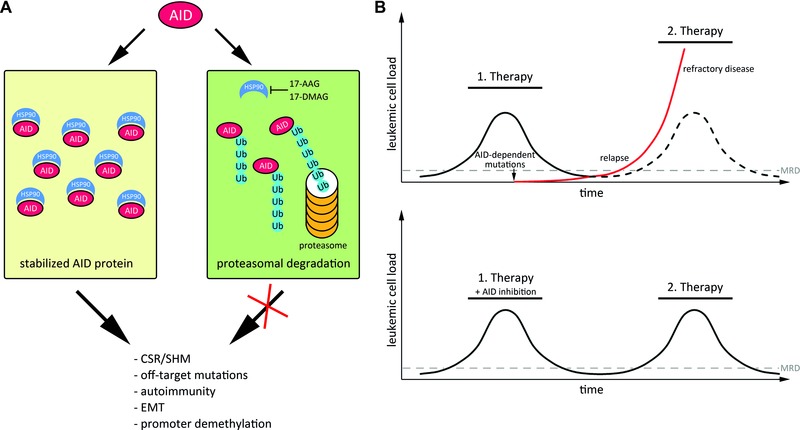Figure 1.

Model for AID stabilization and its activity during cancer progression. (A) AID is stabilized by interaction with HSP90 in the cytoplasm. Interference with HSP90, for example by the HSP90 inhibitors 17‐AAG or 17‐DMAG, leads to destabilization of AID, and its polyubiquitylation and proteasomal degradation. (B) Model for AID‐mediated clonal evolution of leukemic cells. During targeted therapy, the occurrence of resistant clones can be facilitated by AID‐dependent mutations, leading to relapse and refractory disease (top). The red line shows the occurrence of a treatment‐resistant cancer cell fraction. The ticked line indicates the unmutated cancer cell fraction, which remains sensitive to therapy. Simultaneous inhibition of AID could minimize the generation of subclonal mutations, which would confer therapy resistance (bottom). Abbreviations: AID: activation induced deaminase; HSP90: heat shock protein 90; 17‐AAG, 17‐DMAG: HSP90 inhibitors; Ub: ubiquitin; EMT: epithelial‐mesenchymal transition; CSR: class switch recombination; SHM: somatic hypermutation; MRD: minimal residual disease.
